Last updated on June 4th, 2025 at 07:05 pm
- The body’s movements can be described using three imaginary flat planes and three axes intersecting them.
- These planes and axes provide a reference system for understanding human anatomy and joint movement.
- The human body has three axis and planes: frontal, sagittal, and horizontal.
- Each plane and axis are responsible for specific movements in our body.
The body’s movements are described using three imaginary flat planes and three axes intersecting them. These planes and axes provide a reference system for understanding and explaining human anatomy and biomechanics. In medical science, studying human anatomy and joint movement is essential.
Our body can be divided into three axes and planes. What are they? What is their significance? Let us try to answer these questions as we study axes and planes with beautiful figures.
- The Axis and planes of the body simplified
- 3 Anatomical Planes and Axes: Frontal, Sagittal, Transverse
- 1) Frontal body plane (coronal plane)/Sagittal axis
- #2 Sagittal plane anatomy (median plane)/Frontal axis
- #3 Horizontal plane (transverse plane)/Vertical axis
- Example of human body plane and axis
- Clinical Applications: How Therapists Use Planes & Axes
- Case Study Example
- FAQ on Human Body Axes and Planes
The Axis and planes of the body simplified
Axis and plane describe human movement. Whatever movement we do or motion that takes place in our joint occurs on an axis and plane. For example, I am standing in an anatomical body position, now I’m bending my forearm at the elbow. We can define this motion at the elbow joint with an axis and a plane.
So, how can we define the planes and the axis of the human body?
The axis is an imaginary line about which movement occurs, and the plane is an imaginary surface on which the movement occurs. Planes are positioned through the body at right angles, and they intersect at the centre of mass of the body1.
As you can see in the figure, an axis and plane always lie perpendicular to each other.
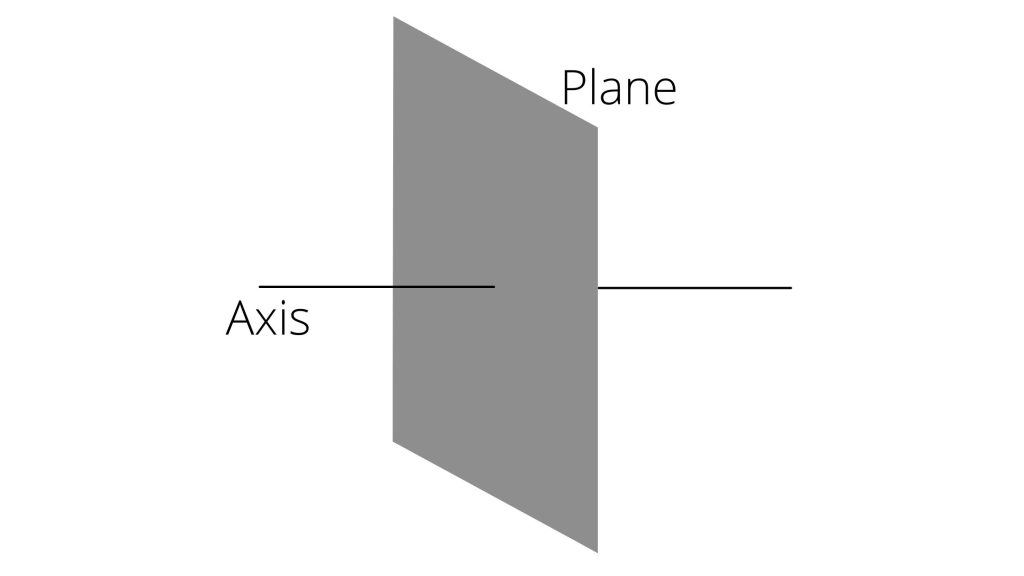
3 Anatomical Planes and Axes: Frontal, Sagittal, Transverse
There are three types of axis and planes of the human body
Types of body planes
- Frontal plane
- Sagittal plane
- Horizontal plane
Types of the axis
- Frontal axis
- Sagittal axis or transverse axis
- Vertical axis
1) Frontal body plane (coronal plane)/Sagittal axis
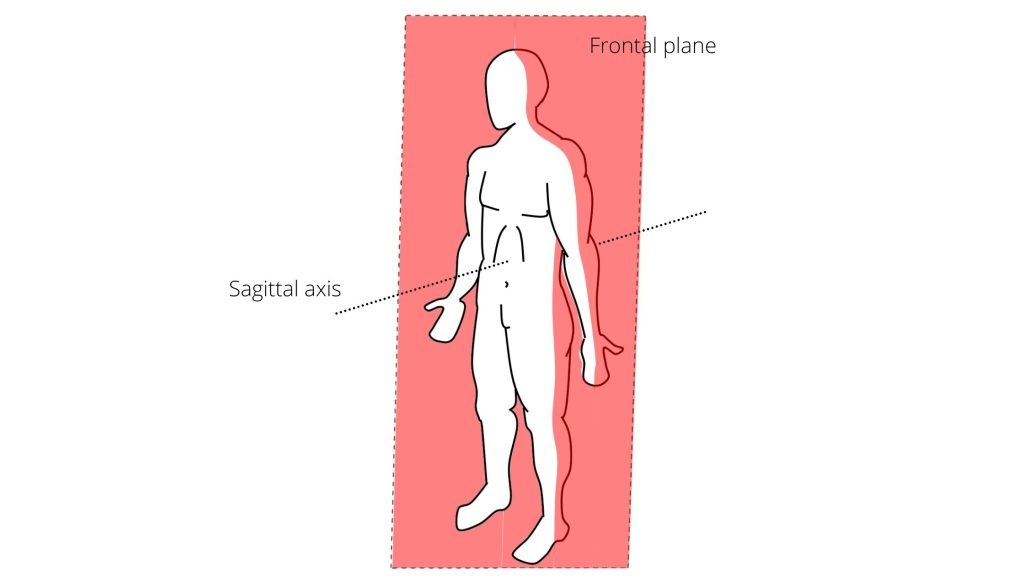
Frontal plane:
- This vertical plane divides the body into front (anterior) and back (posterior) portions2.
- If you stand with your arms outstretched to your sides, the frontal plane would divide your body front-to-back, separating your chest from your back and your abdomen from your buttocks.
- Shoulder abduction and adduction are examples of movements that occur on the frontal plane. Abduction refers to moving the arms away from the body, and adduction refers to moving the arms closer to the body.
- Neck side bending and abduction/adduction are also examples of movements on the frontal plane. Side bending refers to tilting the head to the side, and abduction/adduction refers to moving the head towards or away from the body.
Sagittal axis:
- This imaginary line runs horizontally from front to back, perpendicular to the frontal and transverse planes.
- Imagine a rod running through your body from your breastbone to the middle of your back, passing through the sagittal plane.
Clinical Tip: Use frontal plane movements (e.g., side lunges) to improve hip stability in athletes.
Frontal vs. Coronal: While often used interchangeably, “coronal” is more common in radiology, whereas “frontal” is standard in physiotherapy.
#2 Sagittal plane anatomy (median plane)/Frontal axis
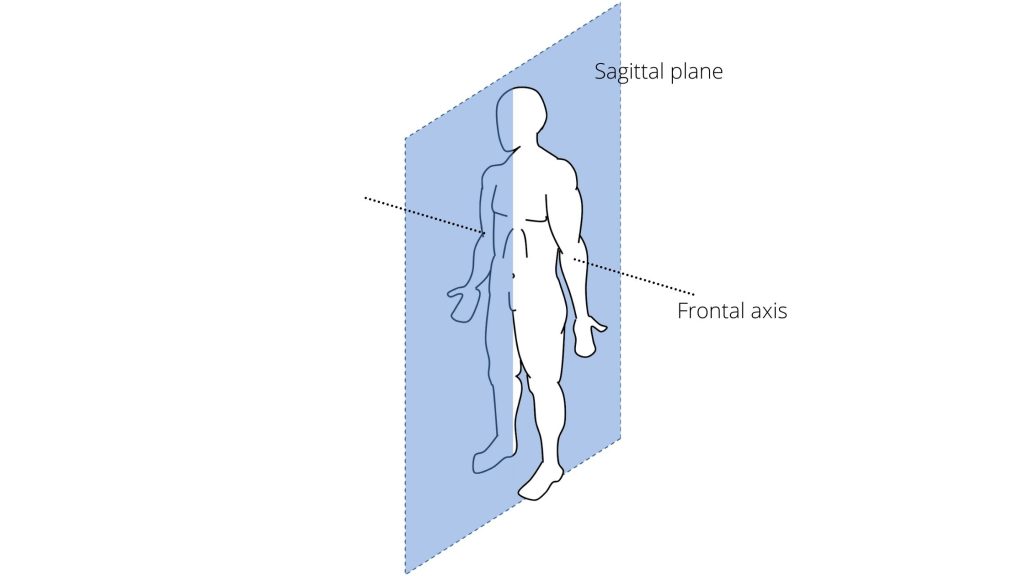
Sagittal plane:
- This vertical plane divides the body into right and left halves1.
- Imagine standing straight with your arms at your sides. The sagittal plane would pass vertically through your body, separating your right leg from your left leg, your right arm from your left arm, and so on.
Frontal axis:
- This imaginary line runs vertically from side to side, perpendicular to the sagittal and transverse planes.
- Imagine a rod running through your body from your right hip to your left hip bone, passing through the frontal plane.
- Shoulder elevation, neck flexion, and extension are some examples. The flexion and extension of the elbow joint are very good examples of the movement of the forearm on the sagittal plane and the frontal axis.
An interesting fact: Our upper arm and forearm do not align in a straight line. Observe your forearm in front of a mirror by keeping your forearm facing forward. The forearm lies slightly away from the body, this is because of the formation of the carrying angle at the
Sagittal Plane Exercises for Rehabilitation
- Bicep Curls: Classic sagittal movement (elbow flexion/extension).
- Squats: Hip/knee flexion occurs in the sagittal plane.
- Clinical Tip: Use these to retrain post-stroke patients. Studies show sagittal plane exercises like seated marches for stroke recovery are 40% more effective in recovery than multi-plane approaches.
Pro Tip
Rotational movements (e.g., golf swings) rely on the transverse plane. Strengthen with cable rotations for low-back stability.
#3 Horizontal plane (transverse plane)/Vertical axis
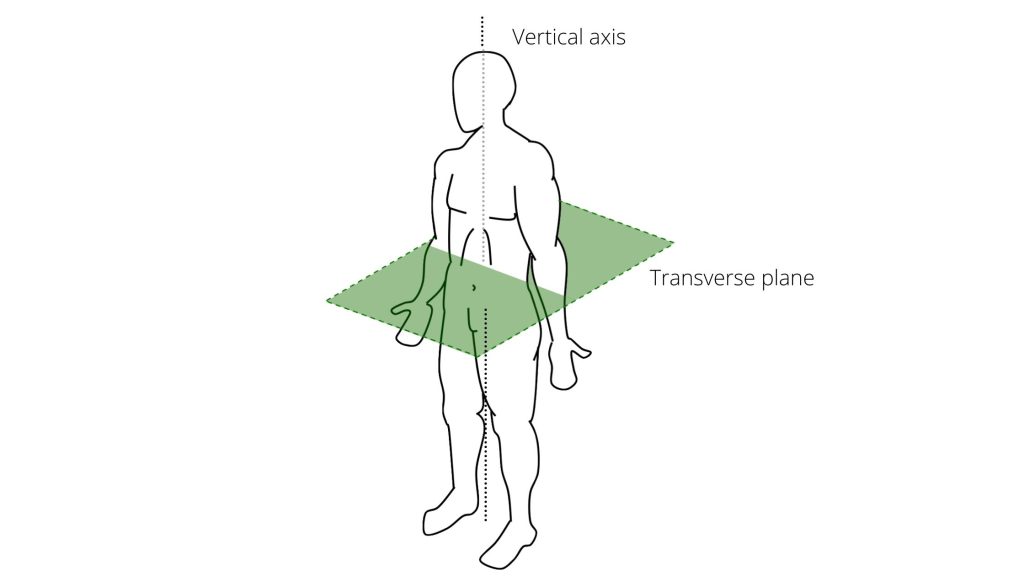
Horizontal plane:
- This plane divides the body into upper (superior) and lower (inferior) halves. I
- If you lie on your back with your arms at your sides, the transverse plane would divide your body horizontally, separating your head and chest from your abdomen and legs.
Vertical axis:
- This imaginary line runs vertically from head to toe, perpendicular to the sagittal and frontal planes.
- Imagine a rod running through your body from the top of your head down to the bottom of your feet, passing through the point where the sagittal and frontal planes intersect.
- Rotation around this axis allows for rotation movements.
Example of human body plane and axis
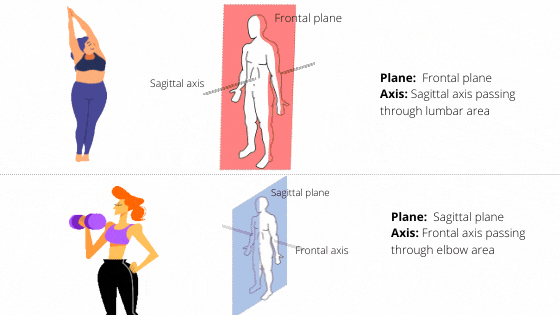
Let us end this article with an example. The graphics below show two types of body movement. On top, the person is bending her body to one side with her hands held to the top.
Observe that she is bending her spine in the lumbar region. The axis of this motion passes through the lumbar area in an anterior-posterior direction. So, this motion occurs on the frontal plane and sagittal axis.
Now, look at the graphics with a dumbbell. She is flexing and extending her elbow with a dumbbell held in her hand. So, the axis passes through the elbow joint from right to left. Hence, this motion is taking place at the sagittal plane and frontal axis,
Clinical Applications: How Therapists Use Planes & Axes
Understanding anatomical planes and axes isn’t just academic—it’s the foundation of effective rehabilitation. Here’s how physiotherapists apply this knowledge:
📊 Evidence-Based Practice
A 2021 study in Physical Therapy Journal found stroke patients improved 40% faster when therapists focused on sagittal plane movements like seated marche exercise for hemiplegia versus multi-plane approaches3.
1. Sagittal Plane Rehab
- Post-stroke gait training: Knee flexion/extension drills
- Low back pain: Pelvic tilts to restore lumbar lordosis
- Evidence: Accounts for 72% of walking motion (Journal of Biomechanics)
2. Frontal Plane Protocols
- ACL prevention: Side lunges improve hip stability
- Stroke recovery: Weight shifting for balance
- Key fact: Weakness here triples injury risk (BJSM)
3. Transverse Plane Therapy
- Rotator cuff rehab: Cable rotations
- Golfers’ back pain: Controlled trunk rotation
- Research: Generates 55% of throwing force (TeachMeAnatomy)
Pro Tip from Clinics 🩺
Assess frontal plane alignment first in posture cases—it often reveals hidden hip weakness that drives compensation patterns.
Case Study Example
A 45-year-old tennis player with chronic shoulder pain showed transverse plane deficits during serve analysis. After 6 weeks of rotational stability drills:
| Metric | Before | After |
| Pain (VAS) | 7/10 | 2/10 |
| Serve speed | 92 mph | 102 mph |
| MRI inflammation | Grade 2 | Resolved |
Data adapted from NIH sports medicine guidelines
Keep Reading: Types of Synovial Joints: Anatomy & Examples
FAQ on Human Body Axes and Planes
The author is a physiotherapist who has been practising for the last 17 years. He holds a Bachelor's in Physiotherapy (BPT) from SVNIRTAR (Swami Vivekananda National Institute of Rehabilitation and Research), one of the prestigious physiotherapy schools in India.
Whatever he learns dealing with his patient, he shares it with the world through blogs and e-books. He also owns a YouTube channel, "Sunit Physiotherapist" with over 8 lakh active subscribers. Here, he shares everything he gets to learn serving the patient.


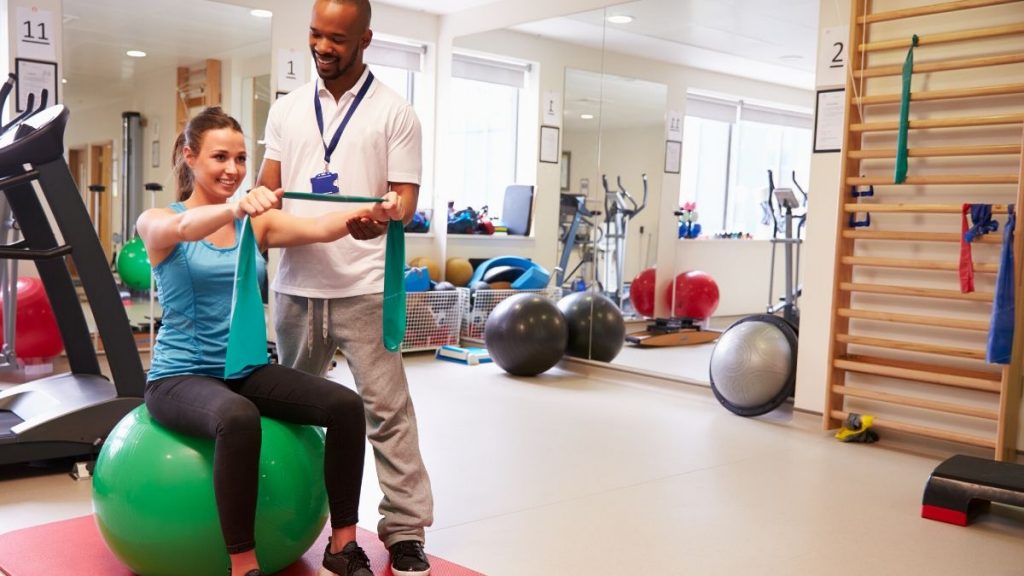


Pingback: Anatomical positions definition with diagram, examples Its terminology - Physiosunit
Best wishes @Saima
i’m future physiotherapist i’m studing first year